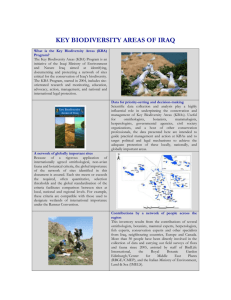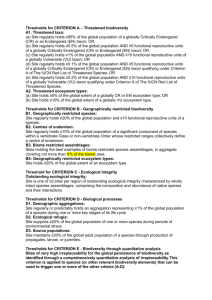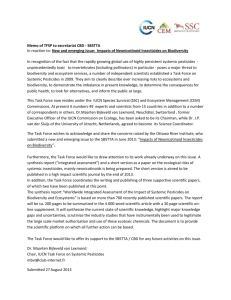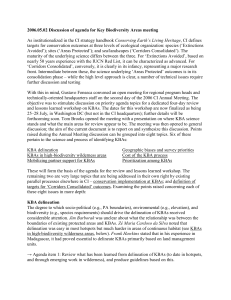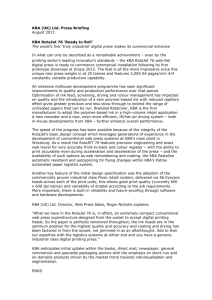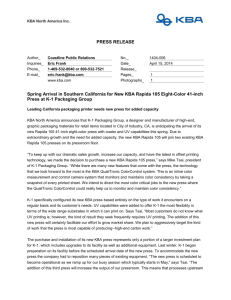executive summary
advertisement
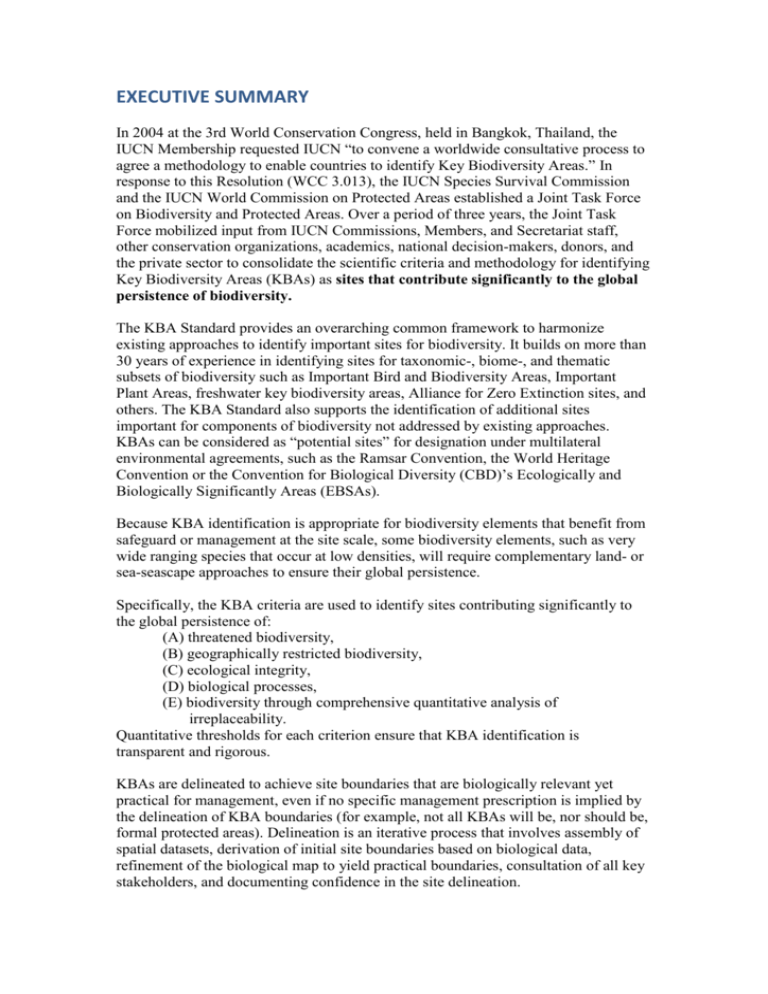
EXECUTIVE SUMMARY In 2004 at the 3rd World Conservation Congress, held in Bangkok, Thailand, the IUCN Membership requested IUCN “to convene a worldwide consultative process to agree a methodology to enable countries to identify Key Biodiversity Areas.” In response to this Resolution (WCC 3.013), the IUCN Species Survival Commission and the IUCN World Commission on Protected Areas established a Joint Task Force on Biodiversity and Protected Areas. Over a period of three years, the Joint Task Force mobilized input from IUCN Commissions, Members, and Secretariat staff, other conservation organizations, academics, national decision-makers, donors, and the private sector to consolidate the scientific criteria and methodology for identifying Key Biodiversity Areas (KBAs) as sites that contribute significantly to the global persistence of biodiversity. The KBA Standard provides an overarching common framework to harmonize existing approaches to identify important sites for biodiversity. It builds on more than 30 years of experience in identifying sites for taxonomic-, biome-, and thematic subsets of biodiversity such as Important Bird and Biodiversity Areas, Important Plant Areas, freshwater key biodiversity areas, Alliance for Zero Extinction sites, and others. The KBA Standard also supports the identification of additional sites important for components of biodiversity not addressed by existing approaches. KBAs can be considered as “potential sites” for designation under multilateral environmental agreements, such as the Ramsar Convention, the World Heritage Convention or the Convention for Biological Diversity (CBD)’s Ecologically and Biologically Significantly Areas (EBSAs). Because KBA identification is appropriate for biodiversity elements that benefit from safeguard or management at the site scale, some biodiversity elements, such as very wide ranging species that occur at low densities, will require complementary land- or sea-seascape approaches to ensure their global persistence. Specifically, the KBA criteria are used to identify sites contributing significantly to the global persistence of: (A) threatened biodiversity, (B) geographically restricted biodiversity, (C) ecological integrity, (D) biological processes, (E) biodiversity through comprehensive quantitative analysis of irreplaceability. Quantitative thresholds for each criterion ensure that KBA identification is transparent and rigorous. KBAs are delineated to achieve site boundaries that are biologically relevant yet practical for management, even if no specific management prescription is implied by the delineation of KBA boundaries (for example, not all KBAs will be, nor should be, formal protected areas). Delineation is an iterative process that involves assembly of spatial datasets, derivation of initial site boundaries based on biological data, refinement of the biological map to yield practical boundaries, consultation of all key stakeholders, and documenting confidence in the site delineation. A set of required and recommended documentation is compiled for each site to support and justify the identification of a site as a KBA. This documentation also allows basic analysis of KBAs across taxonomic groups, ecosystem types and countries and helps users to search and find information easily on the website. It is foreseen that the nomination of sites as KBAs will mainly occur at the national level. However, any individual or organization can submit an expression of interest to IUCN to identify one or more KBAs for a region or a taxa/ecosystem. Upon submission to IUCN, the proposed KBAs will be peer-reviewed and checked for consistency in application of the standard. Following successful review, KBAs will be endorsed, or recognized, by IUCN as meeting KBA criteria and global thresholds, and then published on the website. KBAs should be reassessed and updated every 8-12 years to ensure they still meet the criteria and thresholds. A KBA committee, reporting to the SSC and WCPA Steering Committees, will provide the high-level strategic direction for the KBA Standard and its implementation. The committee will serve as the custodian of the scientific standards, criteria, and guidelines; establish and oversee the processes to nominate, review and endorse KBAs; develop and help oversee strategy and work program; and promote appropriate use of KBA data. The applications and end-users of the new KBA Standard are diverse and numerous. KBA data should inform national and regional biodiversity conservation planning, the strategic expansion of protected area networks by governments and civil society working toward achievement of the CBD Aichi Targets, particularly Target 11, and the nomination of sites for designation under international conventions. KBAs can also support donors and financial institutions making biodiversity investments and inform private sector safeguard policies, environmental standards, and certification schemes.


